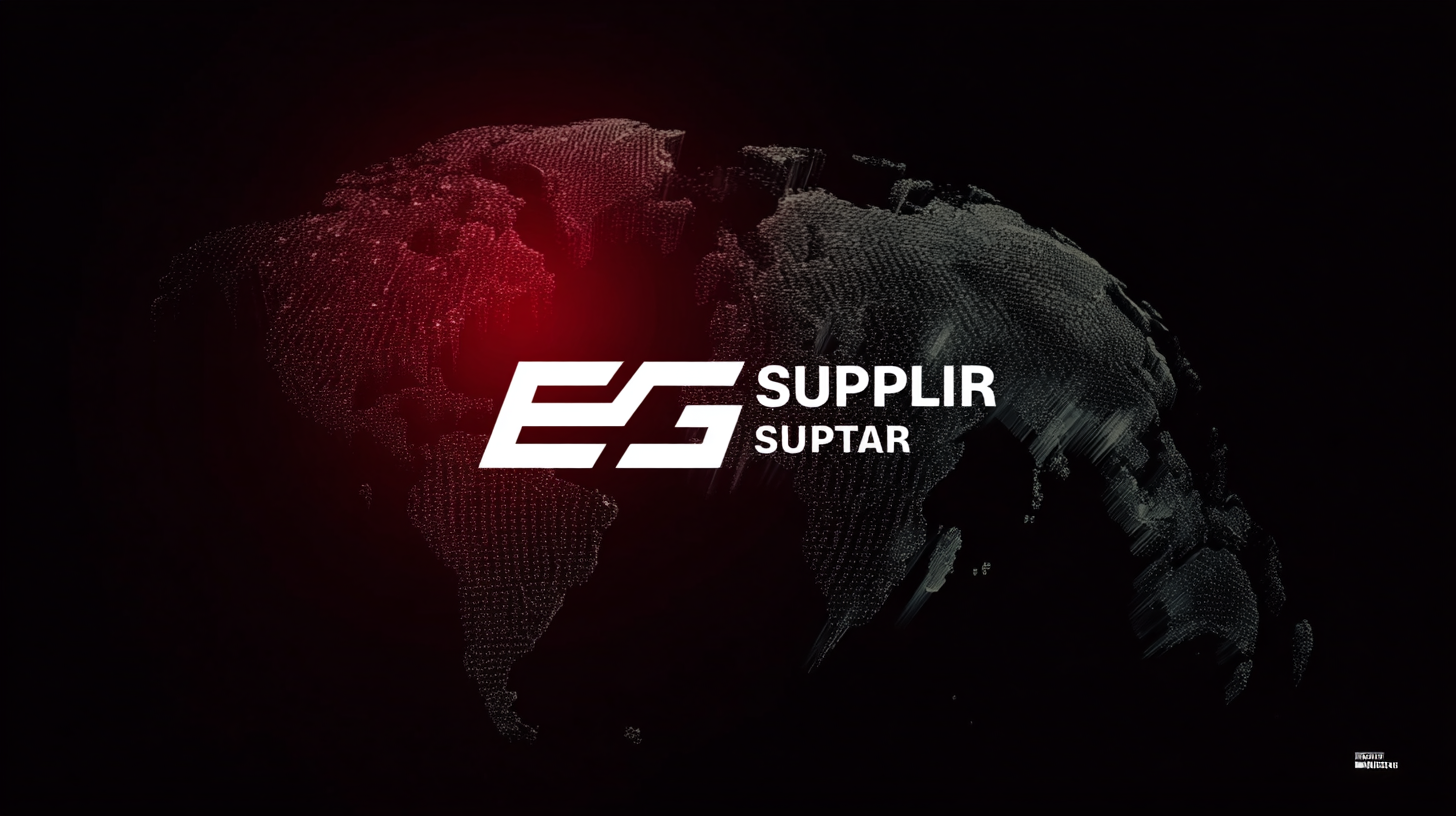
Discover the Leading Global Export Manufacturer That Sets the Standard for Best Supplier Excellence
In today's highly competitive global market, the role of suppliers has never been more critical, particularly in the manufacturing sector. According to a report by Statista, the global manufacturing market is projected to reach $41 trillion by 2025, highlighting the immense scale and importance of supplier relationships in driving efficiency and innovation. China continues to be a dominant player, accounting for nearly 28% of global manufacturing output, as noted in a McKinsey & Company analysis. This underscores the need for companies to partner with leading export manufacturers that not only provide high-quality products but also set the standard for supplier excellence. In this context, we explore the dynamics of global manufacturing, focusing on a prominent Chinese export manufacturer that exemplifies quality and reliability in the supplier landscape.

The Rise of Chinese Export Manufacturers: A Statistical Overview
The global manufacturing landscape has seen significant transformations, particularly with the rise of Chinese export manufacturers. According to a report by the World Trade Organization (WTO), China accounted for approximately 15.2% of the world’s total merchandise exports in 2021, making it the largest exporter globally. This dominance is further evidenced by the country's annual export revenues surpassing $3 trillion, a figure that highlights its critical role in the supply chains of various industries.
The statistical trend is not only about volume but also about the increasing sophistication and technological advancements within Chinese manufacturing sectors. A study by McKinsey & Company reveals that higher-tech exports from China have grown 25% year-over-year, indicating a shift toward more value-added products. This advancement aligns with the Chinese government’s "Made in China 2025" initiative, aimed at transforming the nation into a global leader in innovation and manufacturing. As a result, Chinese manufacturers are setting new standards for quality and efficiency, influencing global supply dynamics and challenging traditional manufacturing powerhouses.

Key Performance Indicators Defining Excellence in Global Supply Chains
In today's competitive global market, the efficiency of supply chains is paramount. Key Performance Indicators (KPIs) serve as essential metrics for gauging supplier excellence, shaping the standards by which leading export manufacturers operate. According to a report by McKinsey, companies that effectively utilize KPIs witness a 15-20% increase in supply chain efficiency. This highlights the crucial role of performance measurement in driving operational excellence.
Among the most critical KPIs are delivery reliability, quality control, and responsiveness. A study from the Institute for Supply Management (ISM) found that companies with top-tier delivery reliability rates—above 95%—achieve significantly higher customer satisfaction levels. Furthermore, quality metrics, including defect rates and compliance with standards, are vital; research indicates that a mere 1% increase in product quality could lead to a 3-5% reduction in supply chain costs.
Moreover, the ability to respond swiftly to market changes and demand fluctuations is another indicator of excellence. According to a recent Gartner report, agile supply chains demonstrate 30% faster response times, enhancing competitive advantage. By focusing on these KPIs, leading global manufacturers not only optimize their operations but also set benchmarks for industry peers.
Innovation and Technology Adoption Among Leading Chinese Manufacturing Firms
In recent years, Chinese manufacturing firms have increasingly focused on innovation and technology adoption, positioning themselves as leaders in the global export market. According to a report by the International Federation of Robotics, China accounted for approximately 36% of the global industrial robot stock in 2021, highlighting the country's commitment to enhancing productivity through automation. This significant investment in robotics and AI technologies has not only improved manufacturing efficiency but also reduced production costs, allowing companies to remain competitive on a global scale.
Furthermore, a study by McKinsey & Company revealed that 80% of Chinese manufacturers are investing in digital technologies, such as IoT and big data analytics, to streamline their operations and improve supply chain management. This proactive approach to embracing innovation enables firms to better respond to market demands and enhance product quality.
With these technological advancements, leading Chinese manufacturers are setting a benchmark for best supplier excellence, indicating a shift in the global manufacturing paradigm where innovation is paramount for sustaining growth and competitiveness.
Comparative Analysis: Chinese Manufacturing vs. Global Competitors in Exports
The competitive landscape of global exports has been significantly shaped by the dynamics between Chinese manufacturing and its global counterparts, particularly as trade tensions rise. China's export strength has long been rooted in its ability to produce high volumes at low costs, resulting in impressive growth rates, such as the 59% and 74% year-on-year jumps in passenger vehicle exports during 2022. However, signs of deceleration in 2024 raise questions about the sustainability of this growth, especially as major economies like the U.S. shift their focus towards self-reliance and diversification in sourcing.

In contrast, while the U.S. has capitalized on its dominance in the services sector, the growing importance of strategic materials, like lithium-ion batteries, places further pressure on Chinese manufacturers to innovate and maintain their competitiveness. Reports indicate that China's trade relations are evolving—moving from partnerships to competitive rivalries across various sectors. As the automotive industry in regions like Spain grapples with the need to adapt to a volatile global ecosystem, it exemplifies the challenges all exporters face in staying agile amid shifting trade paradigms. With these developments, understanding the comparative advantages and weaknesses of Chinese manufacturing versus global competitors becomes essential for stakeholders looking to navigate this intricate market.
Future Trends: Sustainability and Compliance in China's Export Manufacturing Sector
In recent years, sustainability has emerged as a crucial focal point in China’s export manufacturing sector. With increasing global awareness of environmental issues, manufacturers are now under pressure to adopt eco-friendly practices. This shift not only addresses consumer demands for greener products but also aligns with international regulations aimed at reducing carbon footprints. Manufacturers who prioritize sustainable processes, such as waste reduction and energy efficiency, are better positioned to thrive in a competitive market.
Moreover, compliance with international standards has become more significant than ever. As countries implement stricter trade regulations and quality benchmarks, Chinese manufacturers must ensure that their products meet these requirements. This compliance guarantees that exports are not only robust and reliable but also environmentally sound. By integrating sustainability into their supply chains, manufacturers can enhance their reputation and build trust with global partners, ultimately setting industry standards for best practices in export manufacturing.
